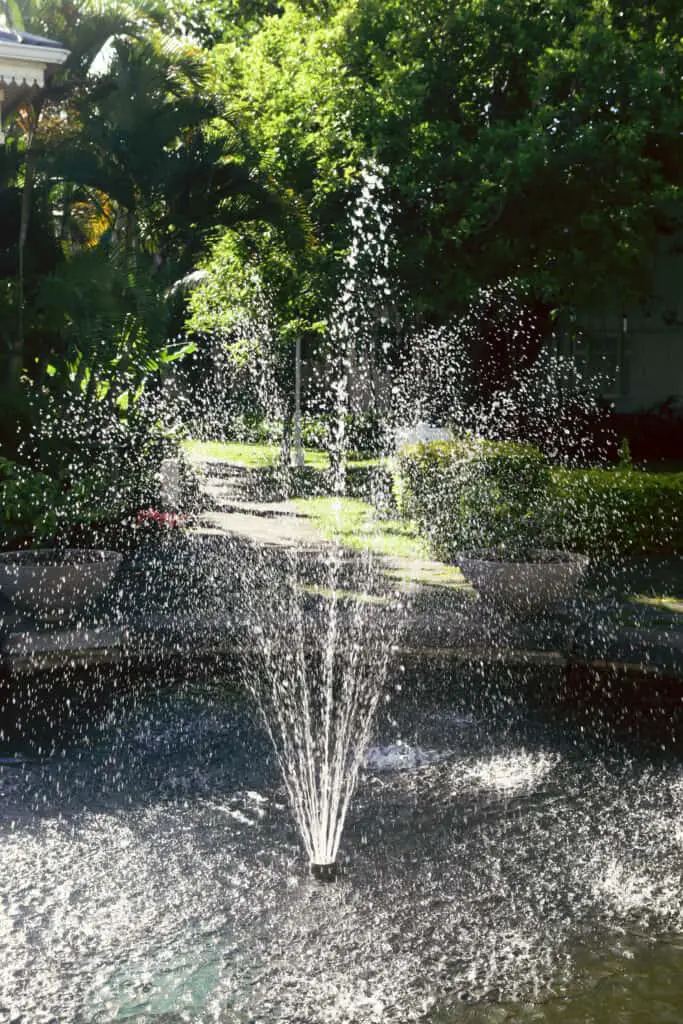
I own a koi pond fitted with a fountain and often wonder if it’s enough aeration for my beloved koi. Can too much aeration be bad for the koi? What are the benefits of an aerator in a koi pond? These are the questions that keep me awake at night, so I decided to do some investigating to find out if I need an aerator for my koi pond.
Applying an aerator to your koi pond provides many benefits to the ecosystem:
- Improved water quality reduced algae
- Prevents mosquitos breeding
- Minimizes sediment deposit
- Breaks down unwanted bacteria
- Removes carbon dioxide
- Stabilizes pH levels
- Reduces alkalinity
- Improves koi’s immune system
How will you know if there is insufficient oxygen in your koi pond and that you need to install an aerator? One way is to inspect the bottom of your pond for muck buildup. A properly aerated pond will have very little muck, and a pond that’s insufficiently aerated will have a lot. There are other indicators to look out for, but ultimately the more aerated your koi pond, the healthier the ecosystem.
Pro Tip: If you’re tired of wasting money and making costly mistakes on the koi-keeping hobby or are thinking about buying koi fish but don’t know where to start, I strongly suggest you check out this ebook. I recently read this ebook, and it contains SO much useful information, such as:
- 3 proven steps to identify koi fish diseases
- WARNING: 3 things you should NEVER do when it comes to caring for koi
- When to seek professional help when it comes to looking after your koi
When Do I Need An Aerator For My Koi Pond?
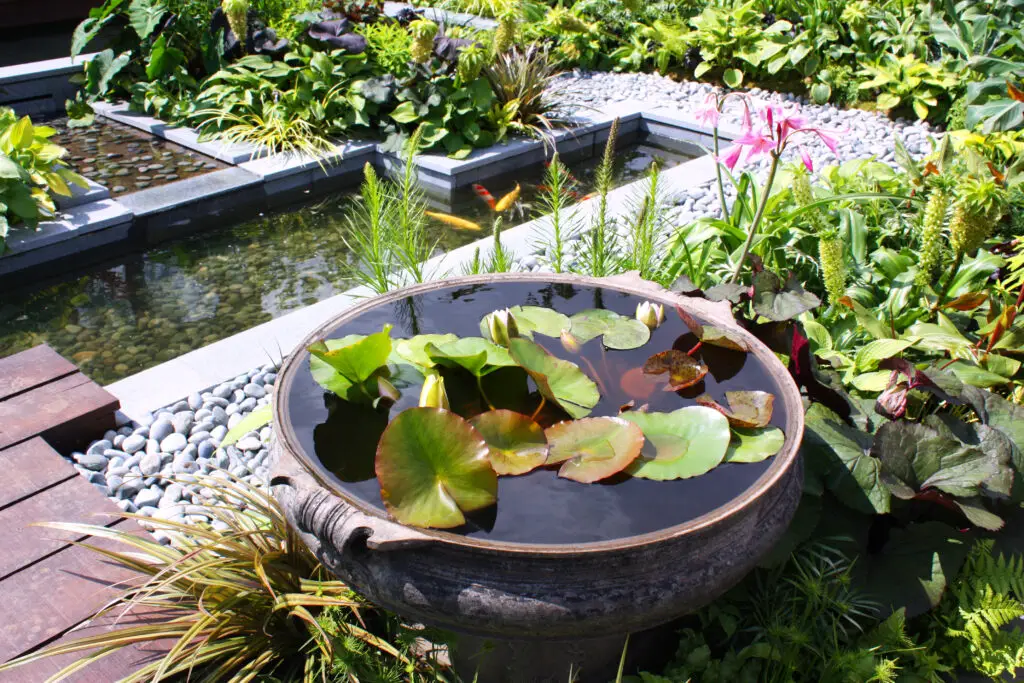
All bodies of water need some form of aeration. It’s the essential element of any pond. Dissolved oxygen is the life force of water; the more of it, the better. Aerators are the alpha and omega to make sure that your pond’s ecosystem is working at ultimate healthy levels.
One aeration technique can work well initially, but life changes under the water over time, and you must keep an eye on changing conditions. Here are some common indicators that you need to add aeration to your koi pond.
Your Pond Is Overcrowded With Koi
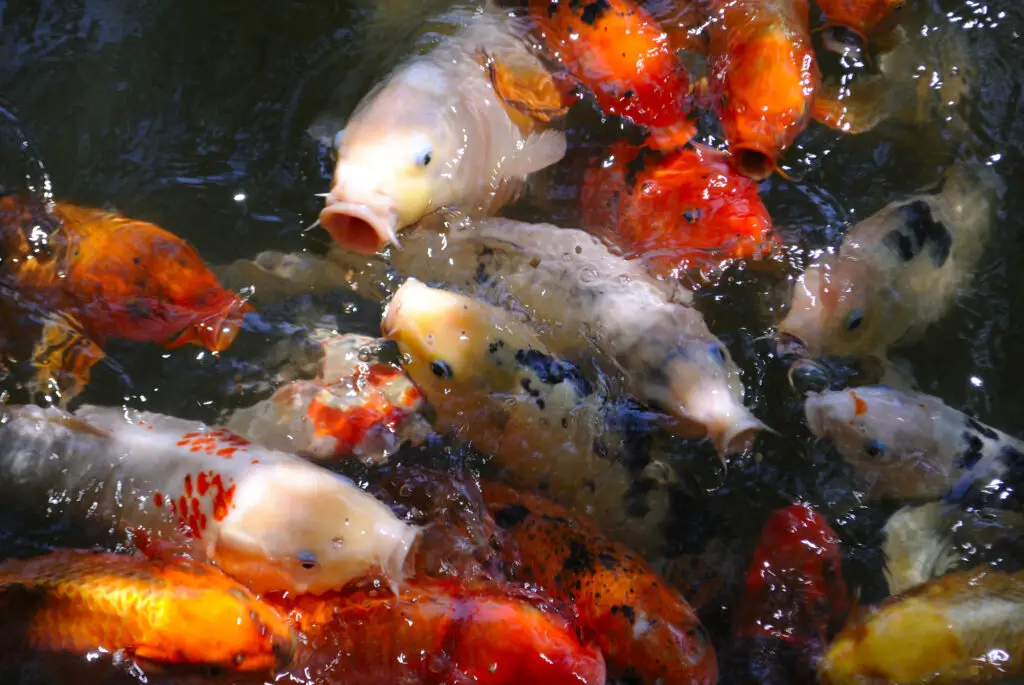
What started with a few koi friends has turned into a school of color. I get it; the more fish in a pond, the more content the owner has. Years of unplanned breeding also add to fish numbers, and more fish means less oxygen for everything else. More fish poop, which also requires oxygen to decompose, will strain the ecosystem.
Good bacteria (aerobic) require oxygen to break down organics at the bottom of a pond, and the more poo and waste, the more oxygen will be required. Lack of oxygen becomes a vicious circle, affecting everything in the pond’s ecosystem except for slow-working bacteria (anaerobic), which thrive on oxygen-depleted conditions.
Muck will start to rear its ugly head as the fast-working aerobic bacteria will only be found close to the surface where the oxygen is, leaving the slow-functioning anaerobic bacteria to work the bottom alone, with less-than-average results.
Koi coming up for air is a sure sign of a lack of oxygen in the water, as their fight for additional oxygen is a sure sign of problems downstairs. A good suggestion is to have 1 to 2 koi fish per 200 gallons of water.
Algae Is Taking Over Your Koi Pond
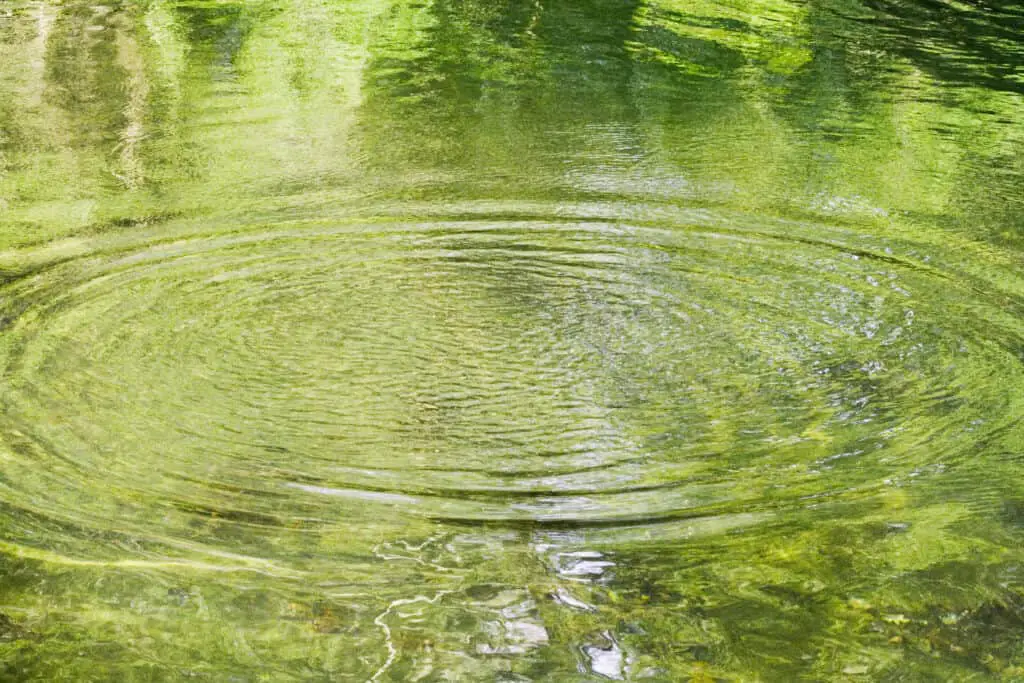
When you look at your koi pond, what do you see? Is it a beautiful colored fish pond or a slimy green wasteland? When algae have taken over your pond, know that there will be a lack of oxygen through eutrophication:
“Harmful algae blooms, dead zones, and also fish kills is the result of a process called eutrophication – which begins with the increasing load of nutrients to estuaries and coastal waters.”
Algae blooms die off at a certain point, making way for new growth, finding their way to the bottom of the pond waiting to be decomposed. Inviting aerobic and anaerobic bacteria to do their jobs, and as mentioned earlier, even more oxygen depletion due to aerobic bacteria.
Algae blooms and subsequent die-offs translate to a heavily oxygen-depleted koi pond!
Your Koi Pond’s Water Is Too Warm
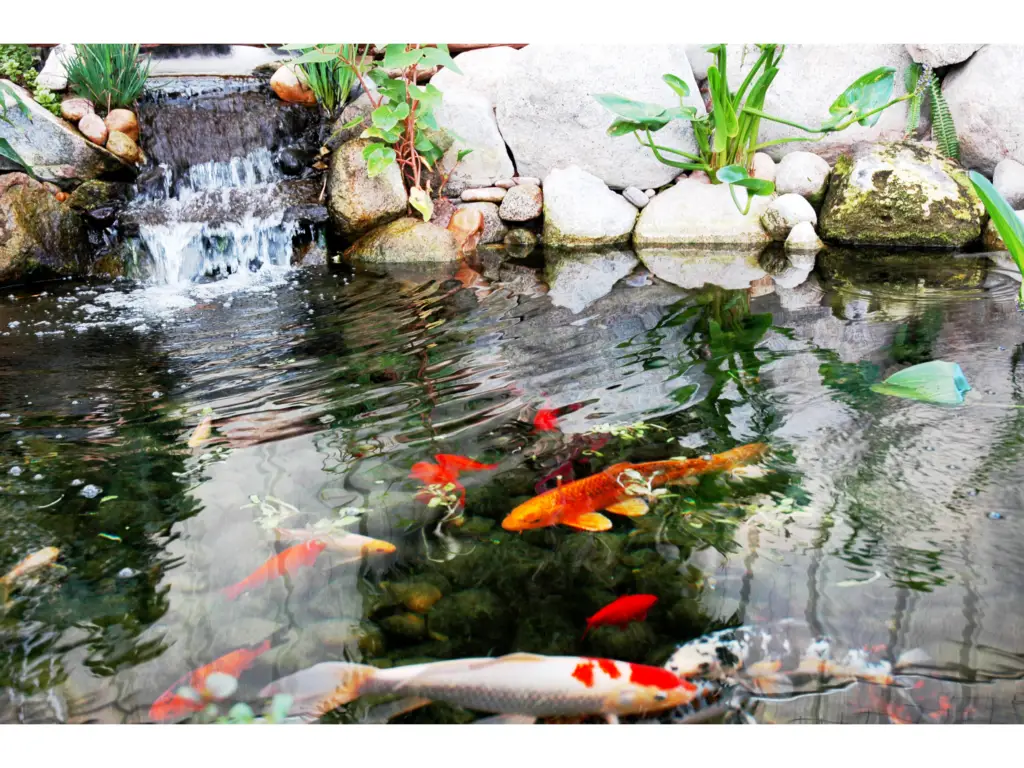
It’s a well-known fact that warm water holds less oxygen than cooler water. Should your pond’s water temperatures reach highs of 70-80 degrees Fahrenheit, and it’s exposed to direct sunlight from morning to night, the chances are good that your fish is not getting the required oxygen.
A proper aerator will sort out this problem, and you can also add some surface floating plants to keep the water cooler while also providing your fish with some shade.
You Recently Treated Your Koi Pond With Algaecides
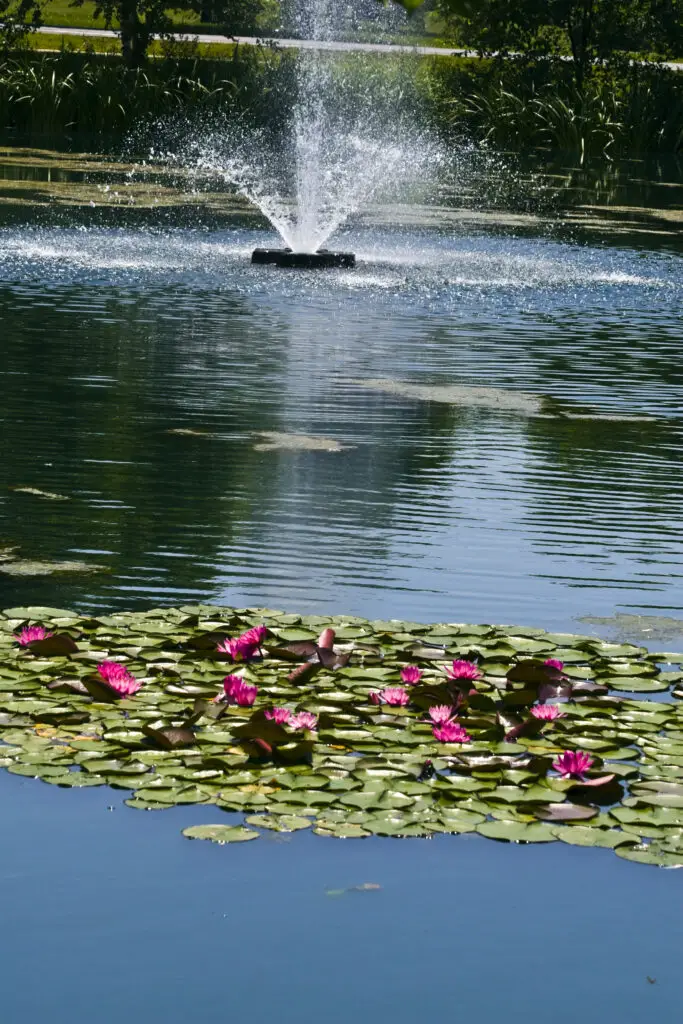
When the algae start dying due to algaecide treatment, the decomposing process begins immediately, taking valuable oxygen from the water during this process. An aerator will assist in replacing the lost oxygen, and you can also do a partial water change if you think it necessary.
Extreme caution should be taken when treating planktonic algae or pea-green water in the middle of hot summer months. Algaecides are known to work very quickly; some kill algae in a day or two.
Water is warmer – less oxygenated – in summer, so the pond’s oxygen levels are already on the low side before you start treatment. Ensure you keep an eye on your fish after treatment, looking for any signs of stress or discomfort.
The Benefits Of Aerating A Koi Pond
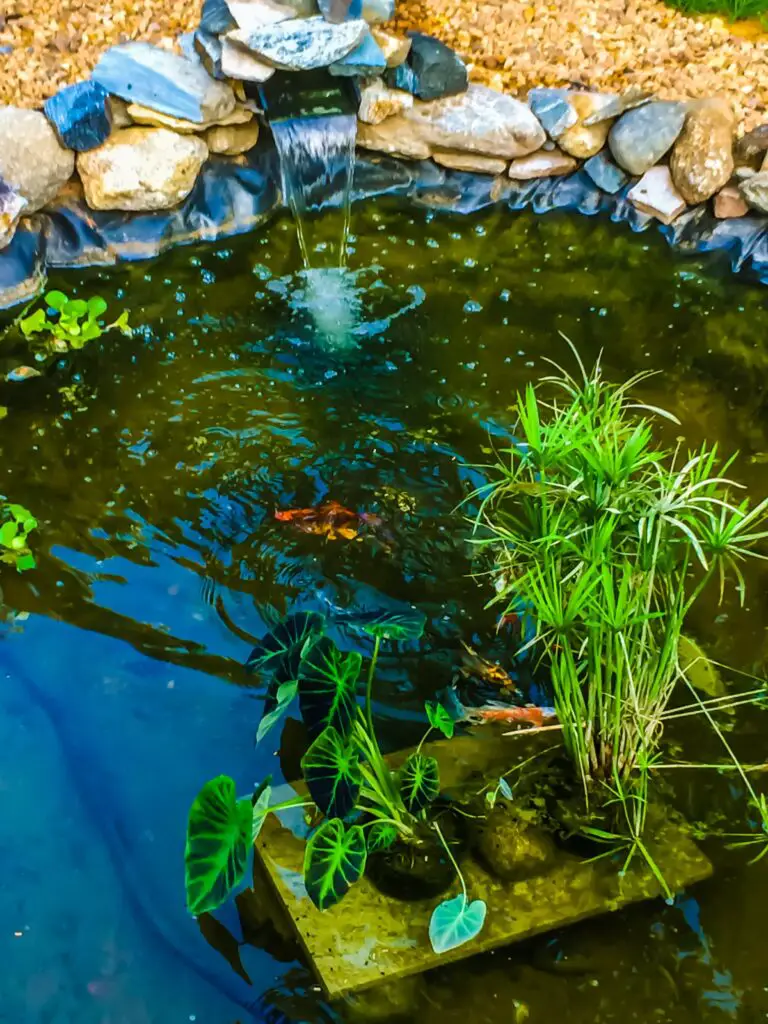
Aerating your koi pond will keep the pond ecosystem working at optimal levels and keep your fish happy. Oxygen is vital to life above the waterline and even more so in bodies of water. While oxygen helps with your pond’s aesthetics, it also improves the natural systems at work beneath the water’s surface.
Placing a waterfall or fountain in your koi pond is a good start when it comes to aerating your pond. The problem is that most of the time, this single water feature does not aerate the pond’s water sufficiently.
The good news when it comes to aerating your pond is that you can’t over-aerate the water; it’s impossible. Unfortunately, you can under-aerate your pond, which leads to all kinds of problems with your koi pond’s ecosystem.
Aeration Leads To Better Water Quality
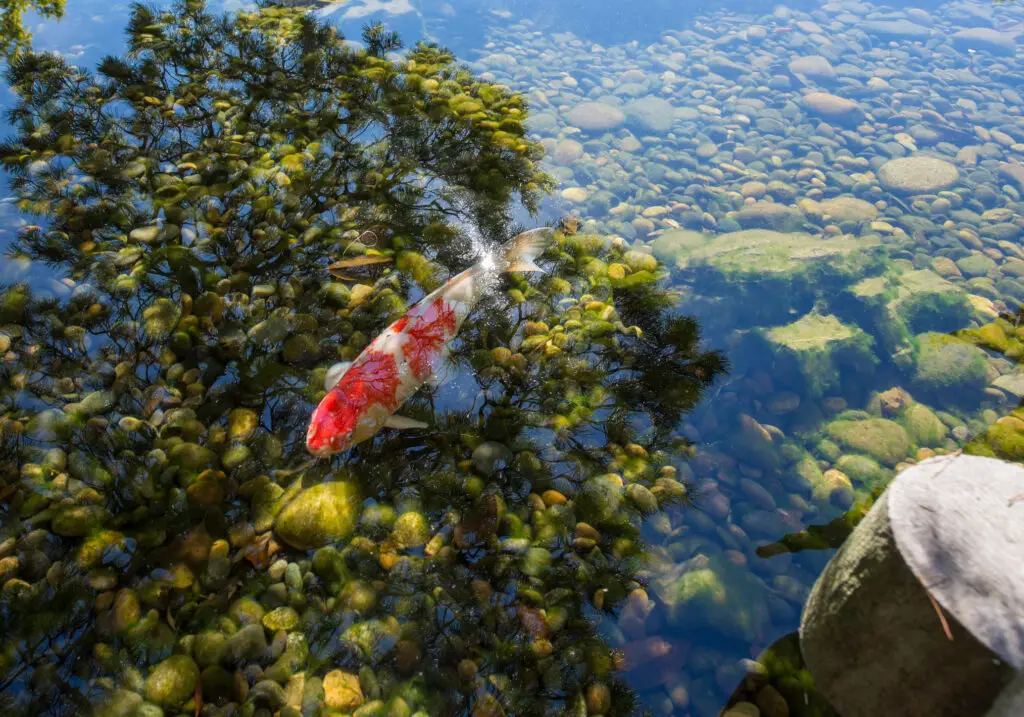
Aerators reduce alkalinity, remove carbon dioxide, and stabilize pH levels in the water, improving its quality by increasing oxygen levels. Extra aeration helps beneficial bacteria, which thrive on dissolved oxygen, process harmful organic waste like ammonia and nitrites.
The extra oxygen in the pond’s water will contribute to improved long-term quality water for the koi to live in and assist with the pond’s biological filtration systems.
Aerators Help Eliminate Algae
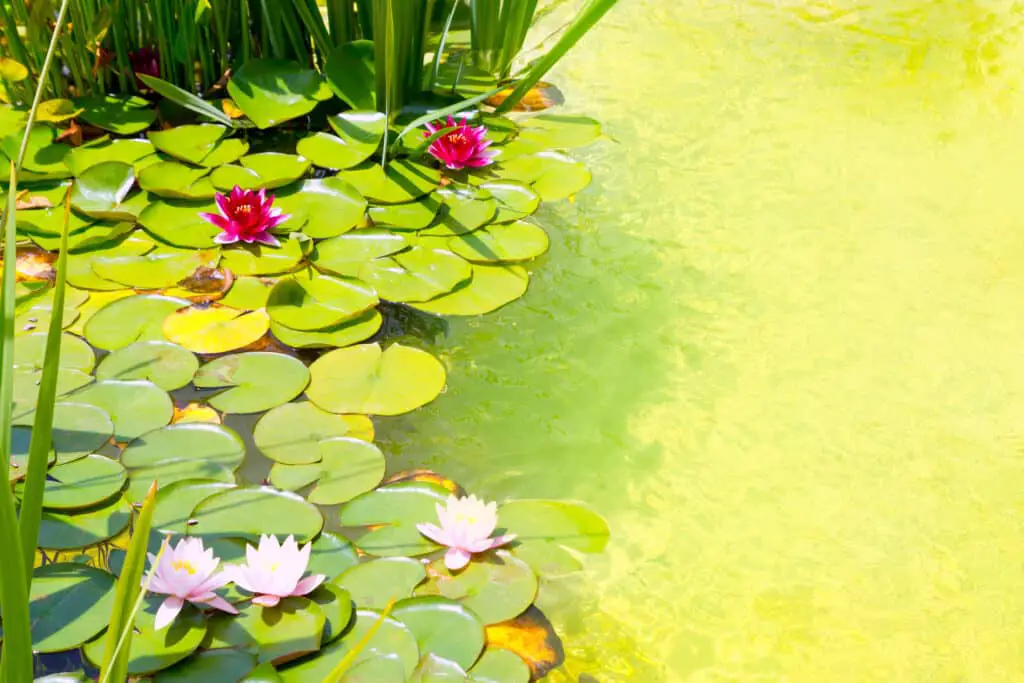
Pond aeration forms part of a long-term solution to combat excessive algae growth. Although many algaecides on the market will sort out your algae problem in a quick time, remember, it’s considered a quick fix as the algae will grow back.
Increased circulation due to an aerator will disrupt the algae spores and send them to deeper pond areas, away from direct sunlight, which they need to grow. Aeration also reduces concentrations of Phosphorus (P) found in ponds.
Algae blooms and phosphorus form a dangerous combination where the algae feed on it to grow. Extra oxygen provided by aerators creates an oxidation reaction, causing the phosphorus to attach to iron that occurs naturally in the pond’s water, making it unable to feed the algae.
Aerators Stop Mosquitos From Breeding
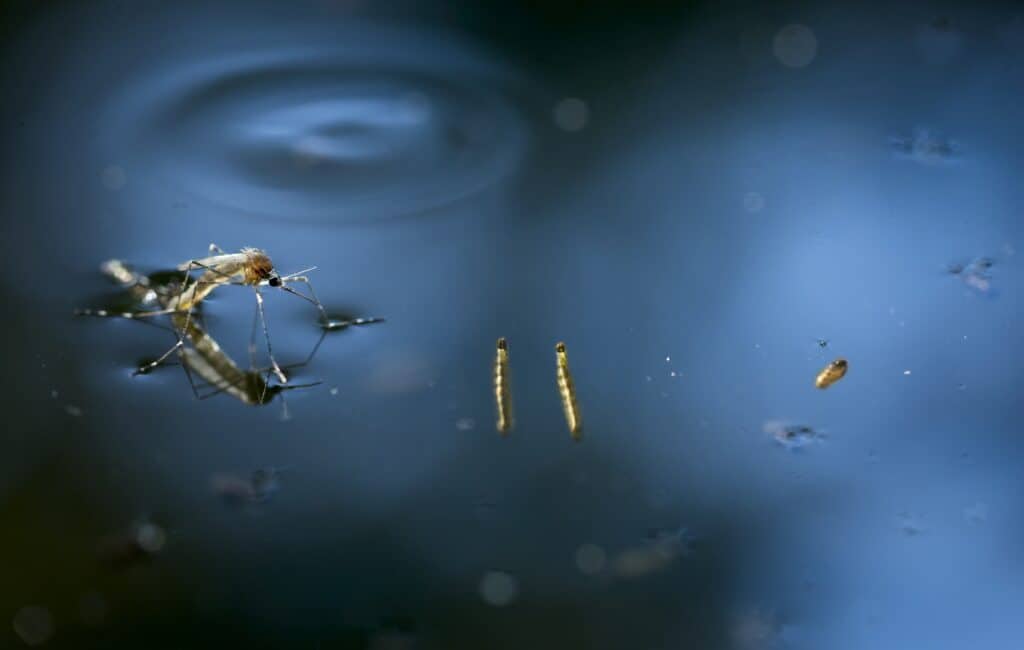
We all know that koi ponds are a favorite spot for mosquitos to come and lay their eggs. Mosquitos require still water to breed; it’s as simple as that. Installed aerators ensure a constant flow – circulation – in your koi pond, ensuring that these bloodsuckers go elsewhere in search of a stagnant body of water.
Suppose the number of biting insects and mosquitos increases in numbers during the spring and summer months. In a situation like this, you may consider increasing the flowing current in your pond by adding an extra aerator.
Aerators Minimize Accumulation Of Sediment
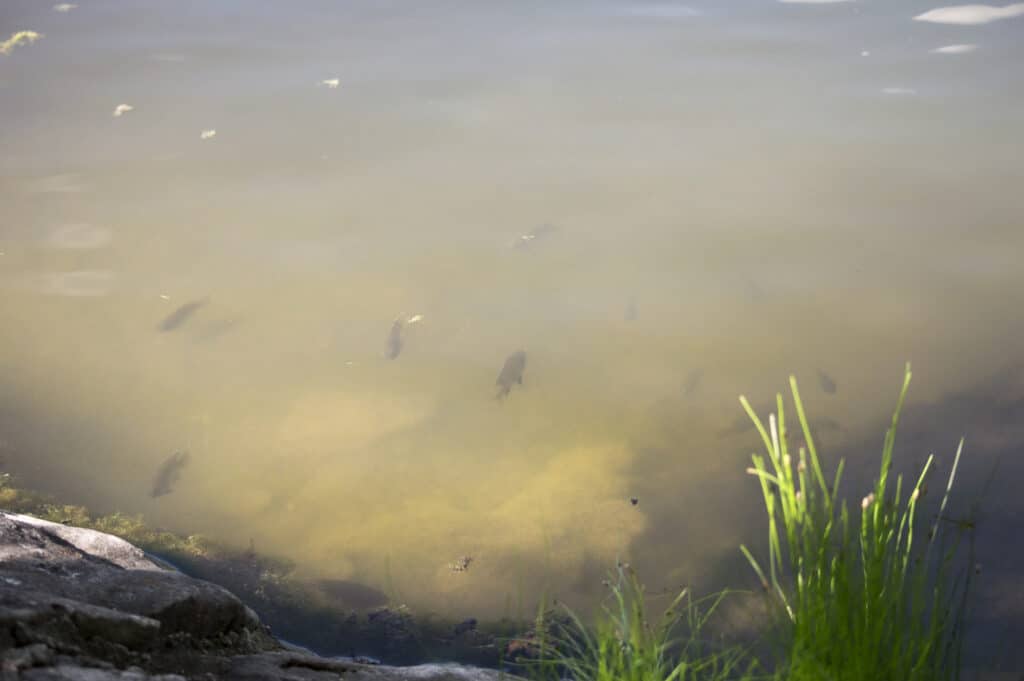
Organic matter – Fish waste, for example – takes longer to break down when oxygen levels are low. The prolonged decomposition of the organic matter can result in a buildup of sediment on the bottom of the pond.
Proper aeration (oxygenation and circulation) reduces the build of bottom sediment as the organic matter breaks down quicker. No koi pond owner jumps out of bed excited to dredge their pond.
Installing an aerator can prevent the need to clean the bottom of your pond or prolong the need to clean it for a couple of months. The constant breakdown of the matter is commonly referred to as the nitrogen cycle – an essential biological filtration process found in all bodies of water – and aeration plays a big role in this process.
Aerators Protect Koi In The Winter
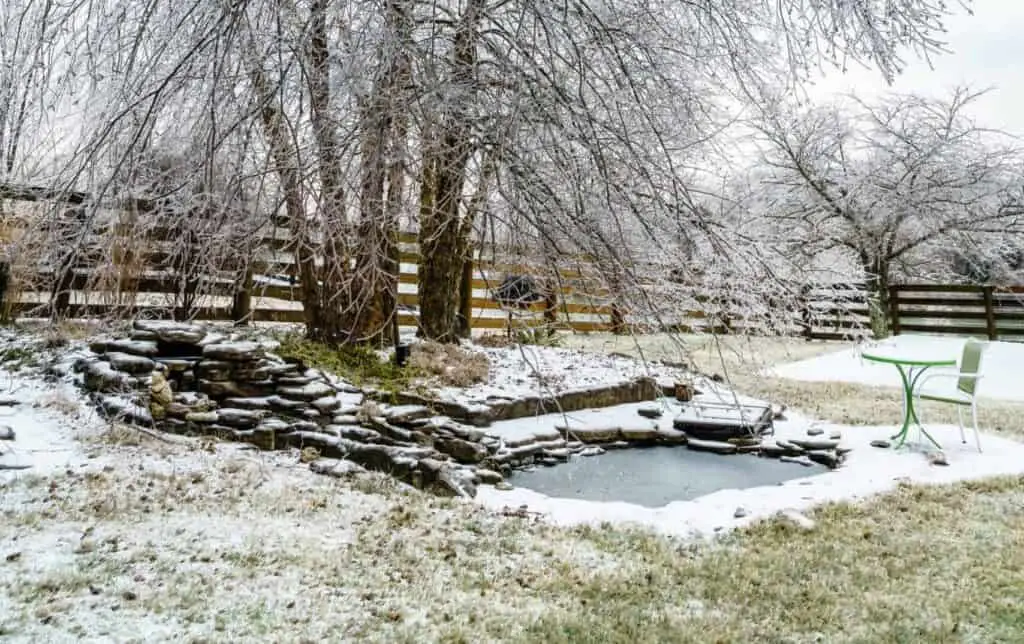
Should you stay in an area where winter means koi ponds are iced over, you will be glad to know that an aerator can help your fish survive through the cold icy months. An iced-over pond restricts sunlight (O2) from reaching aquatic plants, which leads to some of them dying.
When these dead plants start to decompose, they use the solvate oxygen in the pond water and release toxic gasses and carbon dioxide into the water supply. When these toxic gasses get trapped, it doesn’t bode well for your finny friends.
Your beloved koi needs less oxygen in the winter. However, when oxygen levels are severely depleted, your school of koi can die in large groups, commonly known as winter fish kill. You don’t want to go through this traumatic process.
An aerator will manufacture a hole in the winter ice, allowing the dangerous gasses to escape and not build up together and kill your koi. To make double sure that your koi keeps safe and rests peacefully in the winter, it will pump some much-needed oxygen (O2) into your pond for good measure.
Aerators Reduce Repulsive Smells Coming From Your Pond
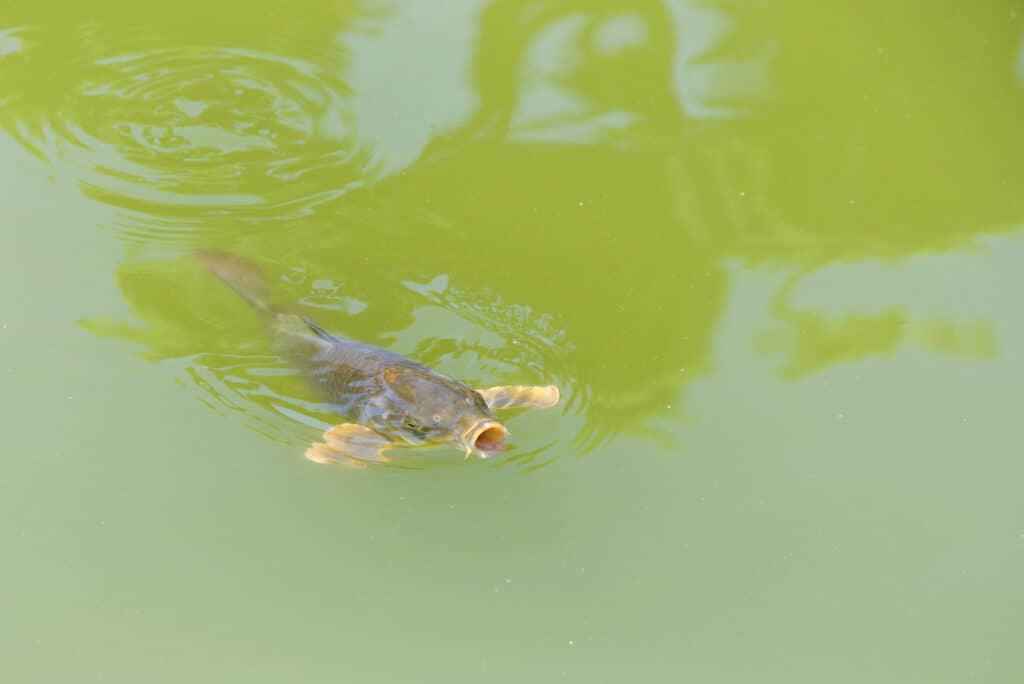
Does your pond smell like rotten eggs or a massive gas explosion of filth? We all know the smell well, as it sometimes originates from within us. It’s called hydrogen sulfide gas; it builds up in conditions that are not well aerated.
Should you come close to your beloved koi pond and find that you need a gas mask to feed your fish, it’s a very clear indication that there’s an inequality in your pond’s ecosystem. Luckily, an aerator will circulate and oxygenate the water, making the need for a gas mask unnecessary.
Aerators Assist With The Destratification Of Water Layers
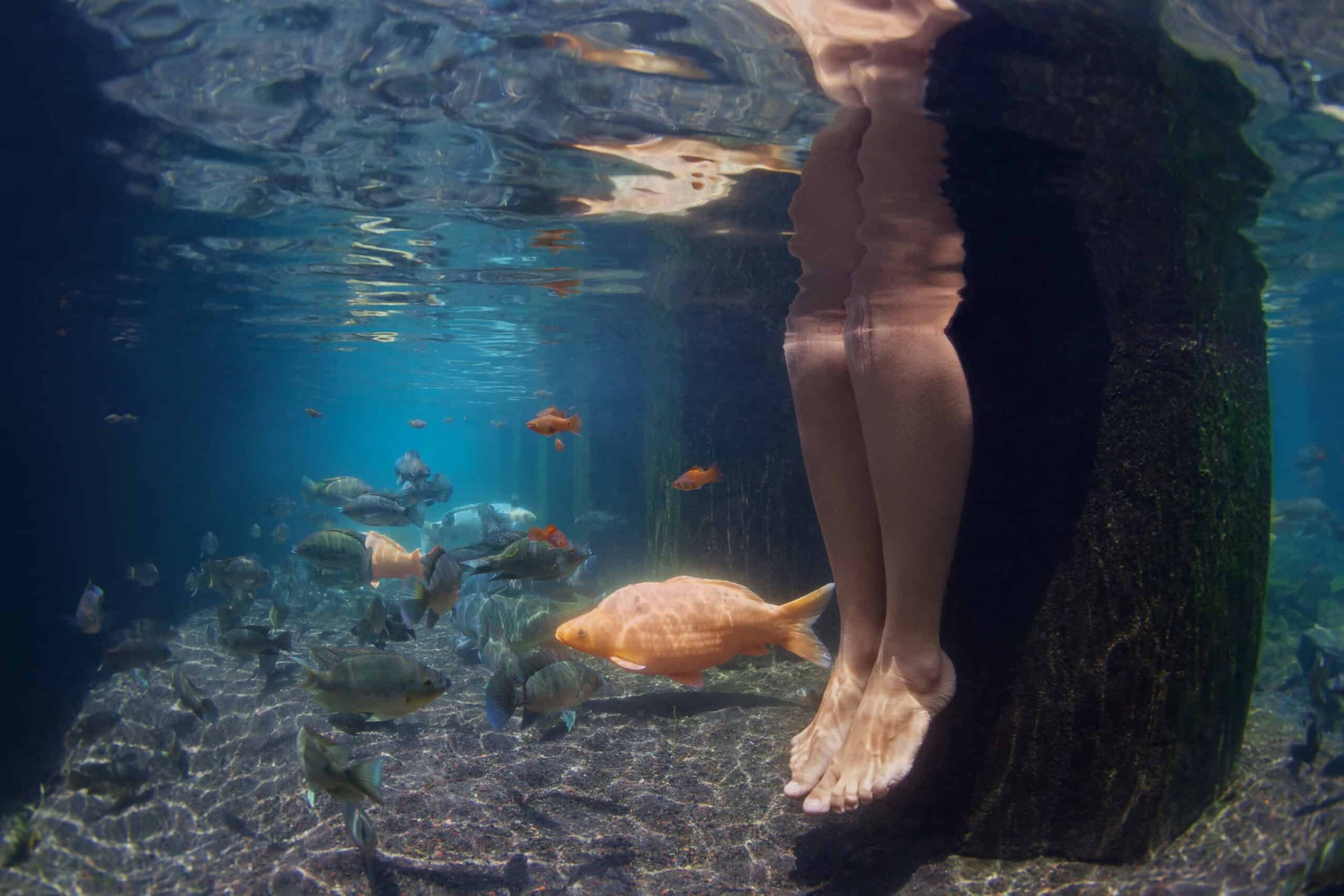
With warm water at the surface area and colder water at the bottom, anyone swimming in a pond or river can relate to this effect. The transition layer is called the thermocline. Different levels of temperature and subsequently different levels of oxygen.
Sad to say, stratified thermal layers of water and oxygen can lead to the death of koi in worst-case events. An aerator will help to circulate these stratified layers, mixing oxygen-lacking water with oxygen-rich water, helping beneficial bacteria to flourish.
Aerators Ensure Healthier And Happier Koi
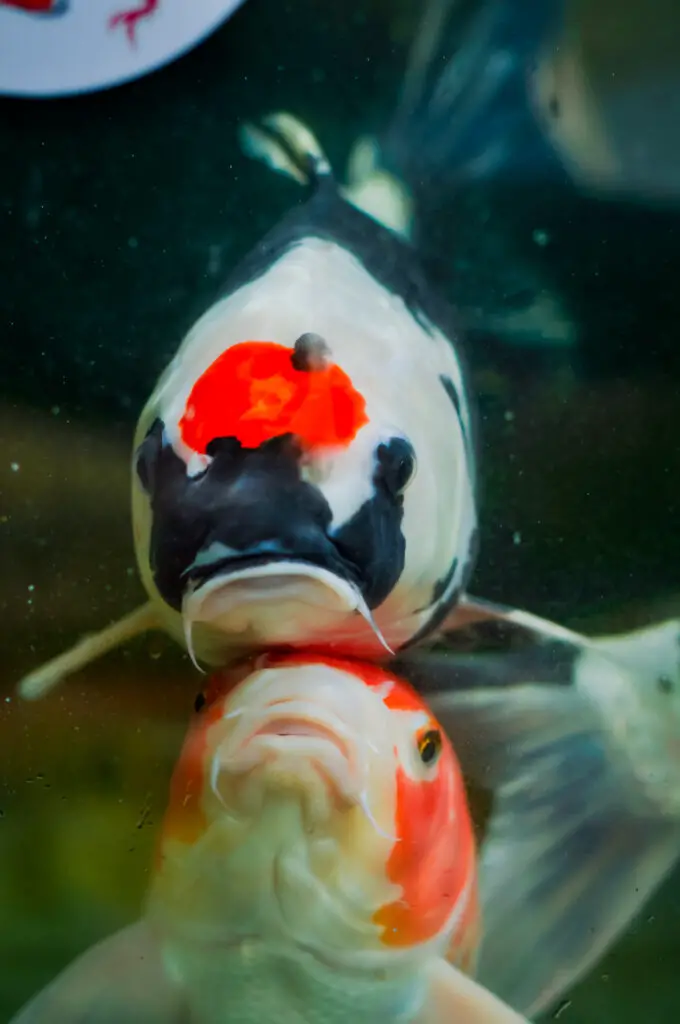
As you would expect, when koi struggle to find air in their water supply, they become sick and highly stressed. When in a stressed state, the koi will be more vulnerable to infections and parasites, causing disease.
Aerators ensure that there is enough oxygen for every fish and help:
- Promote a better color on the koi
- Promote a better immune system
- Increases rate of growth
- Destress the koi
Two Types Of Koi Pond Aerators
When artificially aerating your beloved koi pond, there are two categories, or types, that you can employ:
- Agitators
- Diffusers
Agitator Aerators
Agitator types of aerators are very common and eye-pleasing:
- Waterfall
- Fountains
Agitator aerators generate waves of water movement and dump oxygen into the water. Any aeration is a good idea; however, it may not be the most efficient.
These agitator aerators can have depth limitations concerning oxygenated water reaching every depth of your pond.
Agitator aerators are good for oxygenating the water’s surface column and not much more.
Diffuser Aerators
Diffuser types are aeration systems that force air into the water, typically via a porous material:
- Aerator Pump
- Diffuser Stone
- Windmill Aeration Systems
- Solar Aeration Systems
Diffuser aerators do a better job infusing oxygen into more water columns through the air being forced and circulated simultaneously.
Best Aerators
Koi pond aeration can be done through many different applications, floating fountains, waterfalls, and bottom-fed aerators that use diffusers and compressors.
Here are some excellent aerators for small to large ponds that will improve the ecosystem of your koi pond:
Aerators For 500-1000 Gallon Ponds
Aerators For 1000-2000 Gallon Ponds
- Aquascape Pond Air 2
- The Pond Guy Aerator
Aerators For 2000-8000 Gallon Ponds
- Aquascape Pond Air 4
- CrystalClear KoiAir 1
- Aquascape Pro Air 20
Aerators for 8000+ Gallons Ponds
Aerator For 1-Acre+ Ponds
Conclusion
Aeration is the key that unlocks a healthy pond ecosystem and happy and healthy koi. It’s impossible to over-aerate a pond, while the opposite is true, and oxygen deprived koi pond will result in a horror show sooner than later.
When you don’t take care to aerate your pond with the required level of aeration provided by a waterfall, fountain, and especially a right-sized aerator, nasty things start to happen to the water your beloved koi call home.
Death of your beloved koi is a stark reality when oxygen is not freely available. Install an aerator today and keep your koi alive and kicking. Aerators may be the single most important factor in creating a breathing paradise for your koi.
References:
https://www.thepondguy.com/learning-center/-fish-gasping-for-air-causes-of-low-oxygen/
https://www.thepondguy.com/learning-center/aerobic-vs-anaerobic-bacteria/
https://www.thepondguy.com/learning-center/5-reasons-to-aerate/
https://www.thepondguy.com/learning-center/why-aerate-your-water-garden/
https://www.livingwateraeration.com/blogs/news/benefits-pond-aeration


